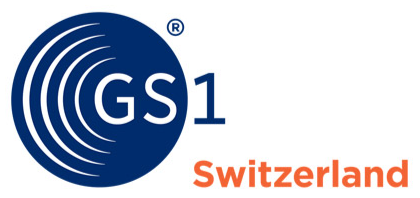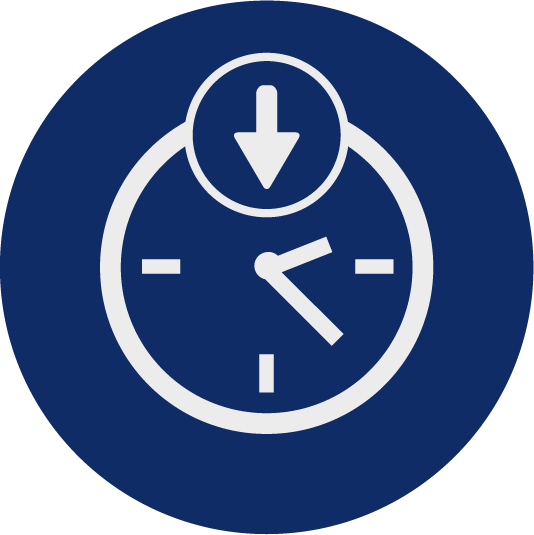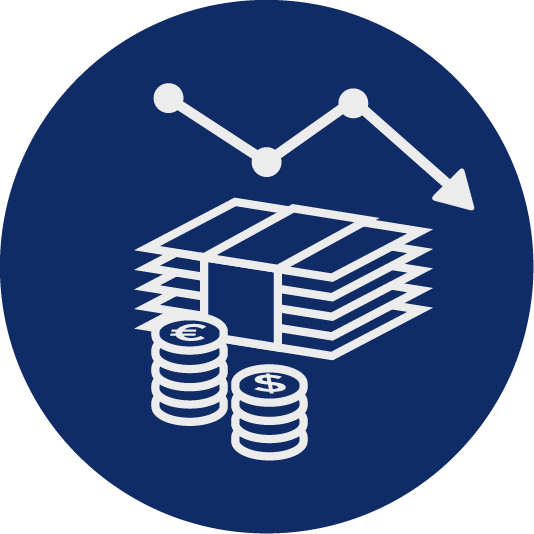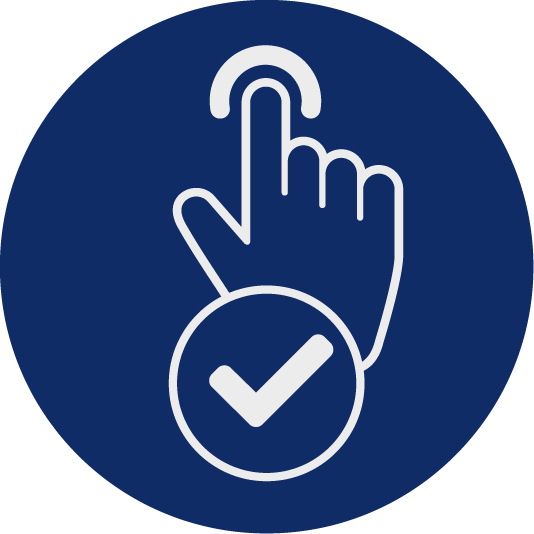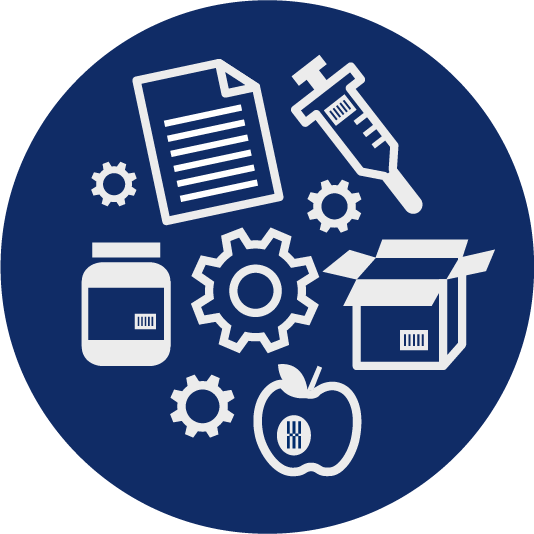GS1 barcodes - simple and industry-independent
In a barcode, the information is presented in a machine-readable font. The font pattern consists of bars and gaps of different widths. Barcodes are divided into one-dimensional (1D) and two-dimensional (2D) barcodes.
The data shown in the barcode is read by machine using optical readers (scanners) or cameras and is processed electronically.
To decode a barcode, a reader (scanner or camera) analyses the light reflected from the black bars and white gaps. The light/dark signals are converted into digital information.
In principle, a distinction is made between one-dimensional (1D) and two-dimensional (2D) barcodes. If the bars are always arranged in a row, it is called a one-dimensional code. To be able to read 1D codes, a barcode reader is required, for example a laser scanner.
2D codes, on the other hand, are usually square symbols that are mainly composed of dots or small squares. To read 2D codes, a recording device is required which can process images. 2D image scanners can also read a 1D barcode, but not vice versa.
The success of the barcode is based on three characteristics: simplicity, reliability and favourable cost/benefit ratio. The high level of security when capturing data using barcodes makes the system one of the most reliable.
Because it is faster and more secure than any manual input, countless applications in retail, logistics, medicine, and manufacturing rely on barcode technology.
GS1 provides a range of barcode symbologies that differ in their properties and areas of application.
Documents
Possible application areas of GS1 symbologies in the consumer goods industry
| Unit | DataMatrix | QR Code | GS1 DataMatrix | EAN/UPC | GS1 DataBar | ITF-14 | GS1-128 |
|---|---|---|---|---|---|---|---|
| GS1 Digital Link | [check-orange] | [check-orange] | |||||
| Consumer units Variable and fixed, multipack, etc. | [check-orange] | [check-orange] | [check-orange] | [check-orange] | [check-orange] | ||
| Retail units (POS); standard delivery packs, etc. | [check-orange] | [check-orange] | [check-orange] | [check-orange] | [check-orange] | ||
| Retail units (not POS) Repackaging, displays, etc. | [check-orange] | [check-orange] | [check-orange] | [check-orange] | [check-orange] | ||
| logistic units (pallets, etc.) | ST4 | ST4 | [check-orange] | [check-orange] |
Possible areas of application of GS1 symbologies in healthcare
| Unit | QR Code | EAN/UPC | GS1 DataMatrix | GS1-128 |
|---|---|---|---|---|
| GS1 Digital Link | [check-orange] | |||
| Direct marketing | [check-orange] | |||
| Single doses (tablets, pills, etc. - attached to blisters) | [check-orange] | |||
| Consumer units (POC); secondary packaging | [check-orange] | [check-orange] | ||
| Retail units Several consumer units in one outer packaging | [check-orange] | |||
| logistic units (pallets, etc.) | S4T | [check-orange] | ||
| Patients | [check-orange] | |||
| Care professionals | [check-orange] | [check-orange] |
Possible areas of application for GS1 symbologies in the technical industries
| Unit | QR Code | EAN/UPC | GS1 DataMatrix | GS1-128 |
|---|---|---|---|---|
| GS1 Digital Link | [check-orange] | |||
| Individual part | not recommended | [check-orange] | ||
| Component | not recommended | [check-orange] | ||
| Trade units Several consumer units in one outer packaging | [check-orange] | |||
| logistic units (pallets, etc.) | S4T | [check-orange] |
